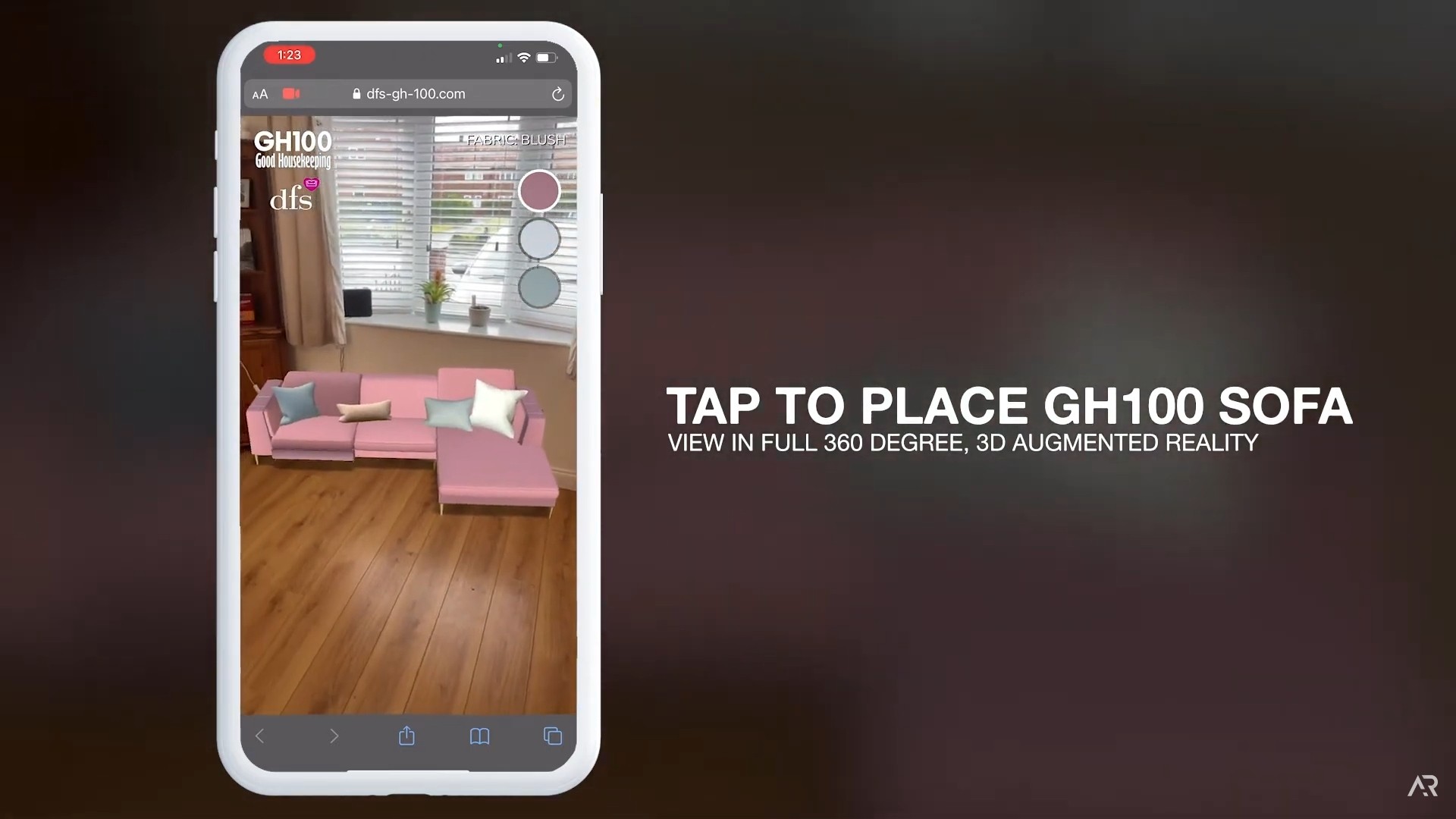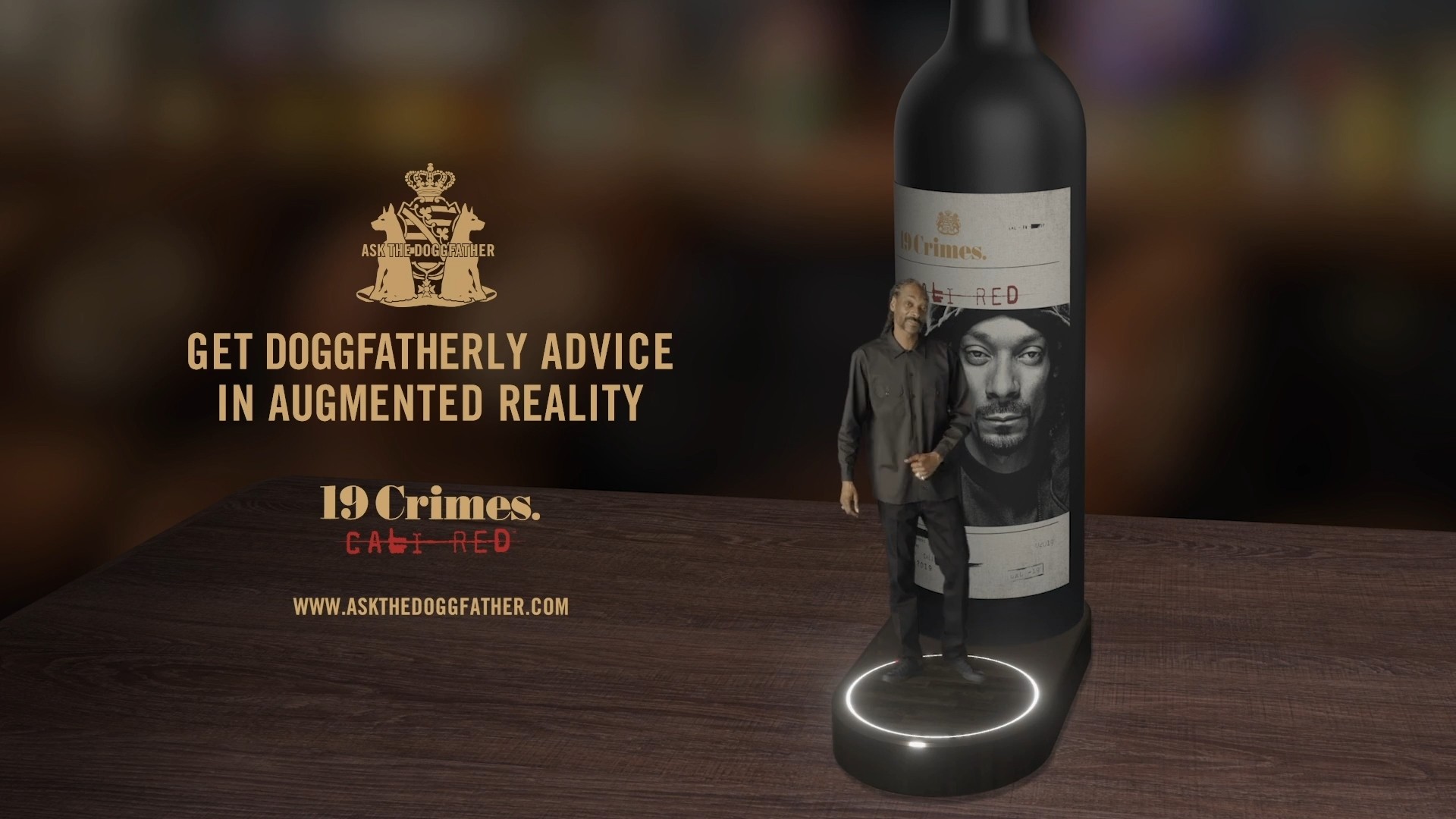In an increasingly digital world, the boundaries between the real and the virtual are becoming blurred. Augmented Reality (AR) has been one of the protagonists of this transformation, offering experiences that blend elements of our physical environment with digital information and visuals.
Now, imagine taking this experience directly to the web, without the need for specific apps or specialized hardware. This is where webAR comes in – a revolution in the way we interact online. In this article, we will explore the fascinating world of AR and webAR and how they promise to shape the interactive future of the web.
-
What is Augmented Reality (AR)?
Augmented Reality (AR) may seem like something out of a science fiction movie, but it is already a tangible reality in many aspects of our daily lives. But, what exactly defines AR?
Augmented Reality is a technology that overlays digital information - such as images, videos, and sounds - onto the real world in real-time. Unlike Virtual Reality, which immerses the user in a completely digital environment, AR uses the current scenario and adds digital elements to it.
To visualize this in practice, think of smartphone apps that display constellations when pointed at the night sky or games that place virtual characters in our streets and parks. However, AR is not limited to entertainment. It has practical applications in sectors such as medicine, architecture, tourism, and retail, where, for example, you can "try out" furniture in your living room before actually buying it.
One of the great advantages of AR is its ability to provide more engaging and interactive experiences. In a world dominated by information, AR offers a new way to see, learn, and interact with the environment around us.
2. Introduction to webAR: Augmented Reality on the Web
If Augmented Reality is already promising on its own, when combined with the vastness and accessibility of the web, its potential is amplified. But what exactly is webAR?
WebAR refers to the integration of Augmented Reality directly into web browsers, eliminating the need for specific apps or additional downloads. This means that when visiting a website or clicking on a link, users can immediately interact with AR experiences without any intermediate steps.
The real magic of webAR lies in its convenience. Imagine the difference between having to download a specific app for an AR experience compared to just opening a link in your smartphone or computer's web browser. WebAR makes AR more accessible, instant, and universal.
Moreover, webAR offers a more practical solution for companies and brands that want to incorporate AR into their digital strategies. Instead of investing in dedicated app development, they can integrate AR experiences directly into their websites, making interaction smoother and more appealing to users.
3. How webAR is transforming the user experience
WebAR is not just a technical evolution; it is a revolution in how users interact with digital content. If the web was previously a two-dimensional space with text, images, and videos, webAR adds a new dimension of interactivity and immersion.
MORE IMMERSIVE AND ENGAGING INTERACTION: With webAR, users are no longer mere spectators. They become part of the experience. For example, an online clothing store can virtually allow customers to "try on" a piece of clothing or see how a pair of glasses would look on their face in real-time, all through a web browser.
EXAMPLES OF WEBSITES AND ADVERTISING CAMPAIGNS: Cutting-edge companies are already leveraging webAR to create innovative advertising campaigns. One example of this is a car brand that allows users to visualize a new full-size model in their garage simply by pointing their smartphone camera at the desired space. Other brands use webAR in interactive ads, where customers can interact with products in a virtual environment while browsing a website.
EDUCATION AND LEARNING: The educational sector is also reaping the benefits of webAR. Teachers can create interactive lessons where students explore 3D models of cells, solar systems, or historical monuments, providing a richer and more engaging learning experience.
In summary, webAR is redefining the way we perceive and interact with online content. By providing more immersive experiences, it opens doors to a more interactive web, where the boundaries between the real and the digital intertwine in surprising ways.
4. Benefits of webAR for companies and brands
As technology advances, brands are constantly seeking innovative ways to engage their customers and stand out in a saturated market. WebAR emerges as a powerful tool in this scenario, offering several advantages for companies looking for a more interactive and immersive approach.
USER ENGAGEMENT: One of the great strengths of webAR is its ability to capture users' attention. In a digital world where competition for attention is fierce, offering an immersive experience can be the differentiating factor that keeps a user on a page for longer or makes them return to a website.
DIFFERENTIATION IN THE MARKET: In the current digital landscape, having a unique and memorable proposition is crucial. WebAR allows brands to differentiate themselves from competitors by offering something beyond standard text and image content.
POTENTIAL FOR INNOVATIVE ADVERTISING CAMPAIGNS: With webAR, the possibilities for advertising campaigns are almost endless. From allowing users to interact with a product in a virtual environment to creating interactive stories where the consumer is the protagonist, webAR opens doors to truly revolutionary marketing strategies.
REDUCTION OF BARRIERS TO ENGAGEMENT: By eliminating the need for dedicated apps, webAR makes it easier for users to access and engage with AR content. This can result in higher conversion rates and greater customer retention.
REAL-TIME FEEDBACK: The interactive nature of webAR allows businesses to obtain instant feedback on their offerings. For example, a brand launching a new product can use webAR to see how consumers interact with it, adjusting their strategy based on that feedback.
In summary, webAR is not just a technological novelty; it offers real potential for brands looking to innovate in their engagement and marketing approaches. In today's competitive landscape, adopting tools like this can be the differentiating factor that puts a company ahead of its competitors.
5. Future Trends: Where is AR and webAR heading?
The potential of Augmented Reality and webAR is undeniable. However, we are just at the beginning of a trajectory that promises even deeper transformations in various sectors. Below, we will explore some trends that may shape the future of these technologies.
INTEGRATION WITH OTHER TECHNOLOGIES: As we progress, we are likely to see a convergence between AR, Virtual Reality (VR), and Artificial Intelligence (AI). This will allow even more personalized and immersive experiences. Imagine, for example, a webAR tutorial that not only shows how to fix a device but also adapts its instructions based on the user's actions and questions in real-time.
EXPANSION INTO TRADITIONAL SECTORS: While entertainment and marketing are the most obvious fields for the application of webAR, other sectors such as healthcare, education, and real estate will start to adopt this technology. We could see surgeries assisted by AR, history lessons where events come to life around us, or virtual visits to houses and apartments in the real estate market.
MASSIVE USE IN EVENTS AND TOURISM: WebAR can transform the way we experience live events, such as concerts, or visit tourist destinations. Instead of just watching a show, for example, spectators could interact with AR elements, making the experience even more engaging.
DEVELOPMENT OF UNIVERSAL STANDARDS: Currently, the field of webAR is somewhat fragmented, with different approaches and technologies. As the technology matures, it is likely that universal standards will emerge, making the development and implementation of webAR experiences more consistent and accessible.
Anyway, the future of AR and webAR looks bright and full of possibilities. The innovations we see today are just the tip of the iceberg, and it's exciting to imagine where we will be in a decade from now.
6. Challenges and Considerations in Implementing webAR
Despite all the excitement surrounding webAR and its vast possibilities, like any emerging technology, it is not without challenges. Understanding and addressing these obstacles are crucial to fully harnessing the potential of Augmented Reality on the web.
Compatibility and Standardization: The technological landscape of webAR is still fragmented. Different browsers and devices may have varying support for webAR, making the creation of consistent experiences across all platforms a challenge.
Technical Limitations: Even though modern devices are powerful, webAR can be resource-intensive, especially when it involves high-quality 3D graphics. This can impact the performance and smoothness of the user experience.
Usability and Design: Creating webAR experiences that are intuitive and user-friendly is essential. Inadequate design can result in a confusing or frustrating experience for the user.
Privacy Concerns: WebAR often uses cameras and, in some cases, may require location information. This raises privacy concerns that companies must address, ensuring transparency and obtaining appropriate consent.
Content Challenges: Content for webAR must be relevant and add value. Creating content solely for the novelty factor may not be enough to engage users in the long term.
In summary, while webAR offers incredible opportunities, it is essential to approach the challenges with a balanced perspective. Those seeking to implement webAR should do so strategically, prioritizing the user experience and ethics along the way.
Conclusion
The digital landscape is constantly evolving, with new technologies emerging and redefining how we interact with the world around us. WebAR is one such innovation, promising to transform the online experience in a profound and engaging way.
Throughout this article, we have explored the concept of webAR, its practical applications, benefits for companies and brands, future trends, and the challenges inherent in its implementation. It is evident that, despite the obstacles, the potential of webAR is vast, opening doors to a more immersive and interactive internet.
However, as with any innovation, it is crucial to approach it with discernment. The technology itself is not the solution; it is how we apply it that determines its success. For companies and developers, the key will be to create webAR experiences that are truly valuable to users, respecting their privacy, and ensuring intuitive usability.
The future of webAR is bright and full of possibilities. We are on the threshold of an era where the distinction between the real and the virtual will become increasingly blurred. For brands, developers, and users, the opportunities are endless. And as we navigate this unexplored territory, it is essential to remember that, at the heart of any technology, lies the human experience.
At MUVA House, we are committed to providing Augmented Reality and WebAR experiences that stand out, convey the desired message, and create high impact. Our blend of creativity, advanced technology, and artificial intelligence allows us to offer tailored solutions that meet the needs and goals of each client.
Don't miss the opportunity to innovate in your engagement and marketing approaches, put your company ahead of your competitors, contact us right now!

















